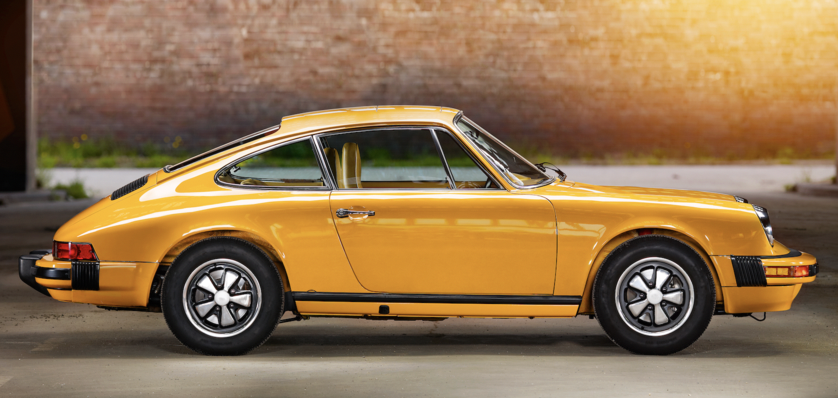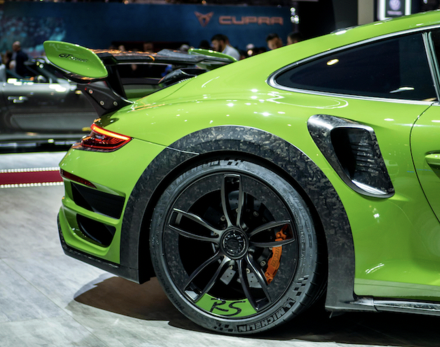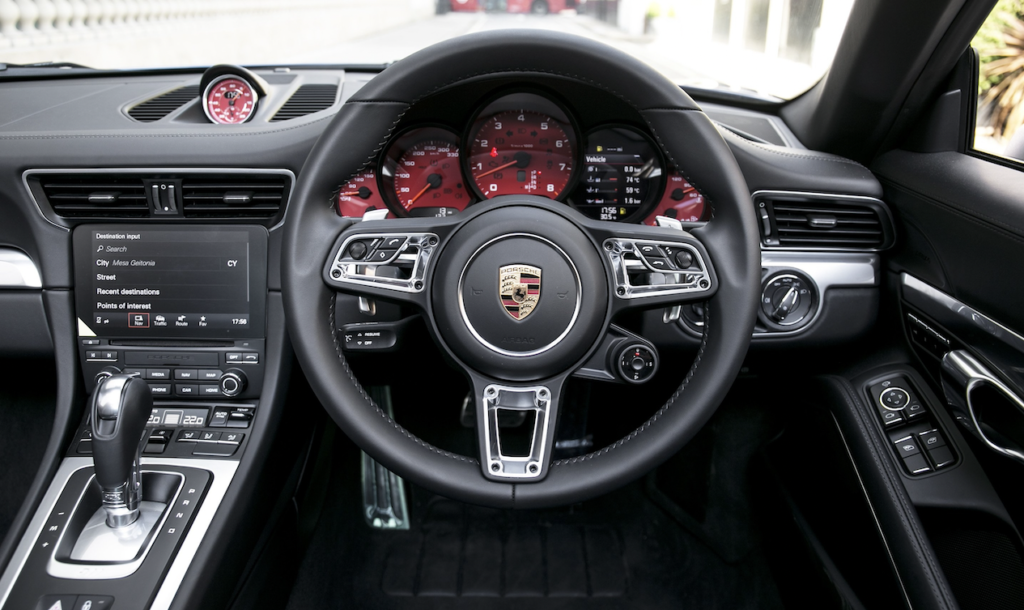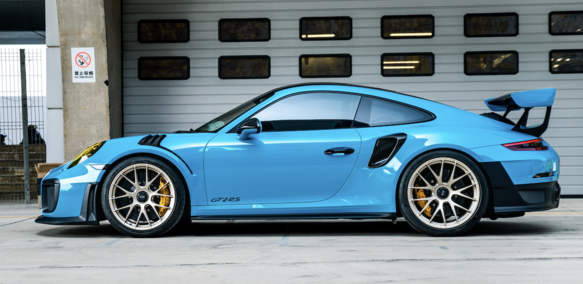Widely acknowledged by many as the world’s best sports car, the Porsche 911 has been having a polarising effect on car lovers for nearly sixty years. Myths and misconceptions abound, meaning a certain reputation goes along with the legend.
It was certainly relatively easy to get yourself into all kinds of trouble with an early 911, but then again, the same could be said of many performance cars of that time. Tyre and chassis technology were still in their infancy, so a fair portion of the wayward reputation that 911s have, could be put down to that. Despite that, some people would go on to own several, having fallen in love, while others have owned one, frightened themselves to death, and never bothered again.

So why do some people hate them while others adore them? The biggest stumbling block for many, of course, is where the engine sits. Having it plonked in the rear is both the 911’s biggest asset and its Achilles heel. To many, it just seems to be fundamentally wrong. However, learning to play to the strengths of the layout and working around the weaknesses is key to unlocking the magic of a 911. Find that sweet spot, and you will be hooked.
The sting in the tail of a 911:
So let’s look at the downside first of all. Having the engine sat over the rear axle means more of a propensity for understeering. There is little weight over the nose, so it doesn’t take much for the front tyres to relinquish their hold on the road and begin to deviate, sometimes dramatically, from the path chosen by the driver. Jumping off the brake pedal a little too early or applying the throttle a second too soon will have an over-exaggerated effect on handling. Often a panicked driver will apply more steering in a futile attempt to resolve this problem before realising things are getting out of shape. To make things worse the resulting lift from the throttle unbalances the car, and the rear breaks loose.
Everything starts to get messy at this point.
What happens next depends on luck, timing, experience and ability. The tendency is for the rear-end breakaway actually to be fairly benign, but you have to be on top of it! All of that rear-mounted weight will be gathering pendulum-like momentum. When it reaches the outer edge of its first arc, the return of the other can be brutal and very hard to deal with, resulting in a startling fishtailing effect. Changing your mind once committed was never received well by 911s.
The benefits of the 911 engine location:
So what are the benefits? From a design and packaging viewpoint, having the engine in the back makes a good case for itself, especially with earlier air-cooled cars. It means a smaller, more aerodynamic front end with all the noisy, oily bits behind you. No intrusion into cabin space and good, clear forward visibility. The biggest benefit it gives, however, is traction. Having a big lump of weight sat on your drive wheels sees to that. The added benefit of weight transfer under acceleration creates even more, to the point where even the most powerful versions grip and go with minimum fuss under hard acceleration.

The first cars, unveiled in 1963, were actually called 901s, but Peugeot claimed the legal rights to all car names with three figures and a 0 in the middle, so after just eighty-two cars were built, the 911 was born. 901s were known as short-wheelbase cars and could be particularly tricky beasts. Understeer was pronounced even at low speed as the light front end struggled to turn.
The short wheelbase then made any unintended mid-corner unbalancing by the driver quite vicious as the rear wanted to have a look at what was happening up front. It was here that the beginnings of the car’s reputation was formed, with the lengthening of the chassis in 1966 was one of many refining steps taken over the next six decades.
Two Wheel Drive
Whether you are on the road or track, in many ways driving a 911 in itself is no more difficult than any other car. The principles needed to get the best out of one remain pretty much the same to this day and also apply in both environments, although when pushed to the more extremes of performance on a circuit, skill and understanding become more important. Drive a forty-year-old example and then jump into a modern version, and you will spot the DNA immediately.
As I mentioned earlier, the secret to unlocking the magic is playing to its strengths while working around its weaknesses.
The technique is all about manipulating the weight of the car on corner entry to make the front tyres bite into the road. With a weight distribution where up to sixty-five percent of the weight is behind the rear seats, what you are looking to do is alter that balance so that it is more even. When you brake, weight transfers away from the back of the car and onto the front, which is why you will see the nose dip on a car that is braking. With a skilful touch, you can use that to your advantage by altering the fundamental balance of the car in your favour.
Trail Braking:
Using a technique called trail braking, the aim is to have your speed sorted out in a straight line as you would do normally, but then keep a residual amount of brake pressure still applied as you begin to turn the steering wheel – trailing the brake away to nothing as the steering lock is gradually applied. You don’t want to do it so much that the rear is too light but just enough to manipulate the car. It takes practice but is endlessly satisfying as you find the car responds to what you are doing, and you find the once reluctant front end is suddenly coming alive in your hands. On track, it enables you to carry higher entry speeds as well as being able to turn more positively.

Once the car has turned, you now have to exercise patience to not undo all your good work. You are looking for a balance, so if you’re doing say, forty miles per hour, you want just enough throttle to maintain that.
If you begin to even slightly accelerate, the 911s biggest strength will work against you – traction. It takes surprisingly little throttle for the rearward weight transfer to take effect. You will be removing grip from the front and adding it to the rear, and we are understeering again. Your plan is to wait until you begin to unwind the steering and then begin the process of accelerating out of the corner.
Learning how a 911 wants to be driven and feeling how your inputs are affecting the outcome is an absolute joy. The technique rewards smoothness and a good feel because the car will let you know it isn’t happy, communicating with you almost telepathically.
The Advent Of 4WD
Despite the traction advantages of the rear-engined layout, Porsche knew that all-wheel drive was going to be a big part of the future of their performance cars. Following the exotic, limited-number model 959, the first production 911 to be offered with all-wheel-drive was the air-cooled 964 from 1989. Cars were getting faster and ever more capable, and the 911 was the preferred daily driver for many customers. Porsche wanted to add another layer of sure-footedness that would cement the car as an all-year-round sports car. In terms of handling and driving, the addition of the prop shaft running forwards to the front axle didn’t alter things significantly.
The Carrera 4 (C4) models were predominantly rear-wheel driven, with the front wheels only getting involved when the system sensed a potential loss of grip at the back. When you drive a C4, it is possible to feel a slight tugging sensation through the steering wheel when this is happening. In the days before electronic traction control systems, that could be a welcome feeling on a dark, wet winter’s night.
It is a system designed with the road driver in mind, though, so as a track tool, while it is still very good, the intervention of the system can tend to confuse things a little when driven at the limit. A good example is one of long, fast corners where the gradual forward transfer of power that takes place results in the front tyres starting to slide earlier than in the two-wheel drive cars. It is one of the reasons that so-called “purists” prefer the more traditional, rear-wheel drive set-up. On the road, however, it is pretty much imperceptible.
Turbo Charging
One of the most iconic 911 models has to be the Turbo. The iconic 930 Turbo, which adorned many boys bedroom walls, was introduced in 1975. It was an instant classic and an even more instant handful. As with the chassis and tyre limitations of early cars being a restraint on progress, with the turbo, it was engine electronics that wreaked havoc. The power delivery on a 1970s 930 was not the most delicate. The sudden onset of prodigious amounts of torque and horsepower, often when you weren’t quite ready for it, could test the resolve of even the most confident and capable drivers. A fearsome reputation and the moniker of “Widow Maker” tells you a lot about the car.

When the 964 Turbo was launched in 1990, it was only available in all-wheel drive configuration, as has every 911 Turbo since. Now the 911Turbo model is probably the most capable car that Porsche makes, with astonishing levels of refinement, performance, traction and control, giving genuine all-weather supercar performance. However, Porsche has retained the hairy-knuckled, fire-breathing version of the 911 in the form of the GT2 and GT2RS. Essentially stripped-out, rear-wheel drive versions of the now civilised Turbo, but with a very large sting in the tail…
GT Cars
The ultimate iterations of the 911 family are undoubtedly the GT cars. Going right the way back to the 2.7RS of 1973, GT cars have been the platform of 911 racing cars. A hugely successful lineage with over thirty thousand victories. The most famous are probably the GT3 models, built on their own production line with bespoke body shells and engines; they carry exactly the same components and ingredients as their racing siblings, normally aspirated engines that rev to nearly ten thousand RPM, fully adjustable, model specific suspension, roll cages and bucket seats. They are designed with the race track as their principal arena. If you pop along to any track day in the UK, Porsche GT3s are everywhere (and GT2s occasionally). Fast, safe and rewarding to drive, they will also soak up thousands of track miles without complaint. They’re even pretty good on the road!

To get the best out of a GT3 requires sound technique and experience. They are not difficult up to a point, but if you push them, they will highlight holes in your technique. The principles remain the same, but the limits are much higher, and the nannying influence of technology is kept to a minimum. The rewards of getting it right are all the more potent, though!

Andreas Preuninger, Director of Performance Cars at Porsche, was once asked about the GT3, “don’t you think the average driver will struggle with this car?” He simply replied, “it’s not for the average driver.”
So 911s have come a long in nearly sixty years with a constant evolution of the concept and the growth of technology both mechanically and electronically. What we have today is a thoroughly modern car than can be your constant daily companion, B-road blaster and your track hack all in one car. The history is still very much alive in the overall feel and behaviour, but now only when you want it to be.
The world’s best sports car?
